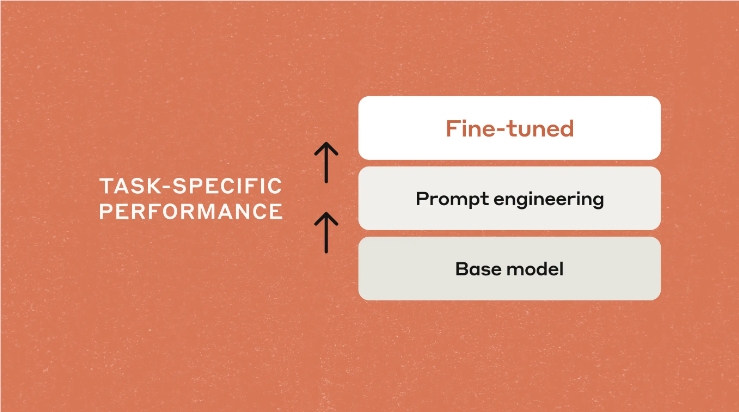The editor of Downcodes learned that Anthropic announced that its latest model Claude3Haiku now supports fine-tuning in Amazon Bedrock. This means users can tailor the model to their needs and improve its performance on specific tasks, such as classification, interacting with custom APIs, or interpreting industry-specific data. The introduction of this feature will significantly improve model efficiency and accuracy and reduce production deployment costs. This new feature is now available in preview, and users can test and optimize through the Amazon Bedrock console or API.
Anthropic has announced that customers can now fine-tune its latest model, the Claude3Haiku, in Amazon Bedrock. This feature enables users to customize the model's knowledge and capabilities based on their business needs, thereby improving the model's effectiveness on specific tasks.

Entrance: https://aws.amazon.com/cn/bedrock/claude/
Fine-tuning is a commonly used technique to improve the performance of a model by creating a customized version of it. Users are required to prepare a high-quality set of prompt-completion pairs as the desired output, and the fine-tuning API, now in preview, will use this data to generate personalized Claude3Haiku. Users can test and optimize through the Amazon Bedrock console or API until the model meets performance goals and is ready for deployment.
Fine-tuning Claude3Haiku brings many benefits. First, the ability to achieve better results on specialized tasks, such as classification, interaction with custom APIs, or interpretation of industry-specific data. Through fine-tuning, Claude3Haiku is able to excel in key areas of the enterprise, significantly outperforming general-purpose models. In addition, fine-tuning can reduce the cost of production deployment and increase the speed of returning results, ensuring that using Claude3Haiku is more efficient than using Sonnet or Opus.
Another benefit is the generation of consistent, on-brand output, ensuring compliance with regulatory requirements and internal protocols. In addition, the fine-tuning process does not require deep technical expertise and is suitable for efficient innovation by all types of enterprises. Customers’ proprietary data is securely stored within the AWS environment, and Anthropic’s fine-tuning technology ensures a low risk of harmful output from the Claude3 model family.
In practical applications, SK Telecom, one of the largest telecom operators in South Korea, uses the fine-tuned Claude model to improve support workflow and customer experience. Its vice president Eric Davis said that customizing Claude has significantly improved customer feedback rates and key performance indicators. The fine-tuned model can effectively generate summaries of topics, action items and customer call logs.
In addition, global content and technology company Thomson Reuters also achieved good results. The company is committed to providing an accurate, fast and consistent user experience in areas such as legal, tax, accounting, compliance, government and media, and expects significant improvements by optimizing Claude for their industry expertise and specific needs.
Tuning Claude3Haiku is now in preview in the US West (Oregon) AWS Region. Currently, text fine-tuning is supported, with a maximum context length of up to 32K tokens, and visual capabilities are planned to be introduced in the future. For more information, users can check out the AWS release blog and documentation.
### Highlights:
- ?️ **Fine-tuning function**: Users can fine-tune the model through high-quality prompts to improve the professional capabilities of the model.
- **Cost Effectiveness**: Claude3Haiku is the fastest and most cost effective model suitable for specialized tasks.
- ? **Data Security**: Customer’s proprietary training data remains within the AWS environment, ensuring security and low risk.
All in all, the Claude3Haiku fine-tuning function launched by Anthropic provides users with powerful customization tools to better adapt to various business needs and significantly improve the efficiency and safety of the model. This marks a new stage in the development of AI model customization, and the future is promising!